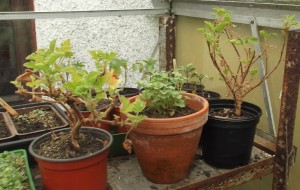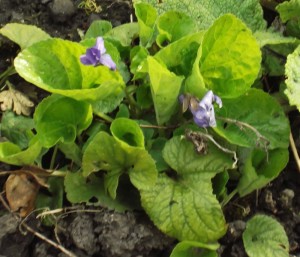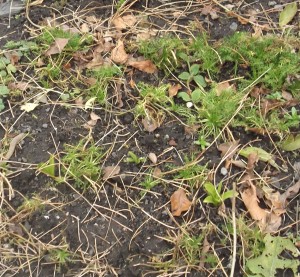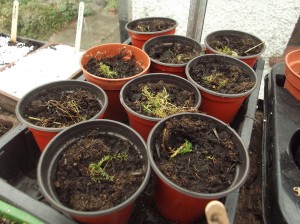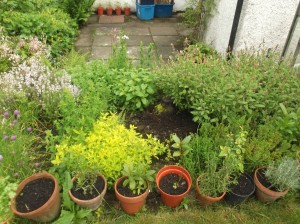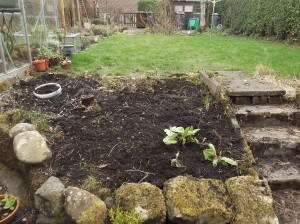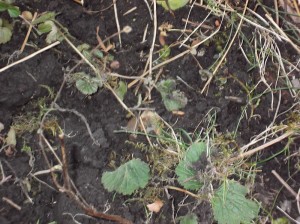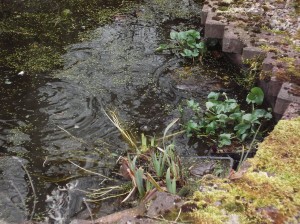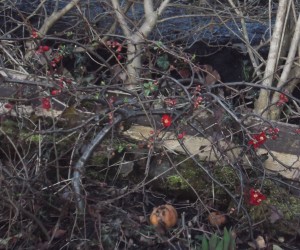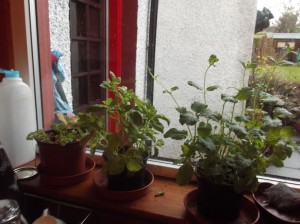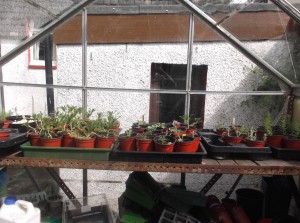 This is a herb of dry stony hillsides, apparently. You would think it would hate this year’s summer, so wet, so overcast and humid, but apparently not. My plants this year – from the seeds of this plant – are all flourishing, with enormous felty grey leaves, and flower spikes pushing through the lush undergrowth, because all the herbs are pushing out leaves as fast as they can go.
This is a herb of dry stony hillsides, apparently. You would think it would hate this year’s summer, so wet, so overcast and humid, but apparently not. My plants this year – from the seeds of this plant – are all flourishing, with enormous felty grey leaves, and flower spikes pushing through the lush undergrowth, because all the herbs are pushing out leaves as fast as they can go.
Mullein has an odd, occasionally sinister back-story. It is known sometimes as hag’s-taper, because it is thought that witches used the fibres of the leaves to make wicks for the lamps they used in rituals. On the other hand, they were often planted to keep witches away, and Ulysses is supposed to have taken a mullein with him when he went to confront Circe. Actually, it must have been used quite widely for making candles or providing tinder to start fires, as it is also known as candle-wick plant and torches.
Its other chief use has always been in the treatment of diseases of the lungs, particularly TB, to the point where it was commonly grown outside cottages in Ireland, because of the prevalence of the disease. I can’t help feeling a shiver down my spine when I think of this, as TB overshadowed much of my family history, and the women of previous generations were haunted by the fear of it appearing in any of their connections – perhaps this is why it gets associated with witches!
Other names are to do with its appearance – velvet plant, shepherd’s staff, Jupiter’s staff, Aaron’s rod, wild ice leaf. It is very tall, silver and gold among the drab and fading flowers of late summer. It is generous with its flowers and in setting seed, and an unexpected pleasure in a garden.
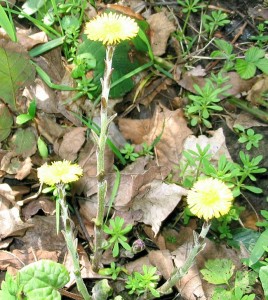
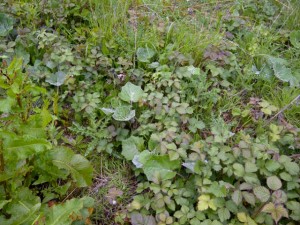
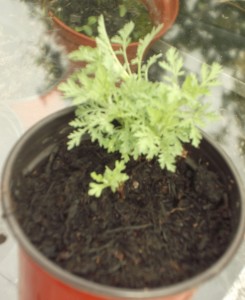
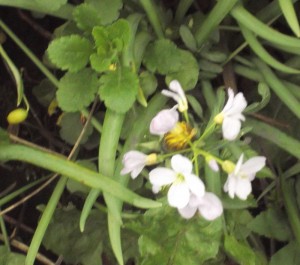
 Once we had a bay tree. At its best, it was about seven feet high and as vigorous as anything in the garden. It survived temperatures of -20 degrees, and there was a blackbird’s nest in it. Unfortunately, however, it took up a lot of room and shaded out everything else in the herb patch, so it had to go. We cut it down, dug up roots and punched copper nails into the stump, but for years it kept coming back, and this is one of the suckers thrown up in its last days. For all the vigour of the stems, they don’t root particularly easily, and to be honest, this is my sole success.
Once we had a bay tree. At its best, it was about seven feet high and as vigorous as anything in the garden. It survived temperatures of -20 degrees, and there was a blackbird’s nest in it. Unfortunately, however, it took up a lot of room and shaded out everything else in the herb patch, so it had to go. We cut it down, dug up roots and punched copper nails into the stump, but for years it kept coming back, and this is one of the suckers thrown up in its last days. For all the vigour of the stems, they don’t root particularly easily, and to be honest, this is my sole success. This is a plant I bought when I was feeling pessimistic about the prospects of the rooted suckers. It’s doing pretty well too, a little ahead of my own plant. I’ll keep them in pots, clipped small, and harvest the leaves regularly.
This is a plant I bought when I was feeling pessimistic about the prospects of the rooted suckers. It’s doing pretty well too, a little ahead of my own plant. I’ll keep them in pots, clipped small, and harvest the leaves regularly.